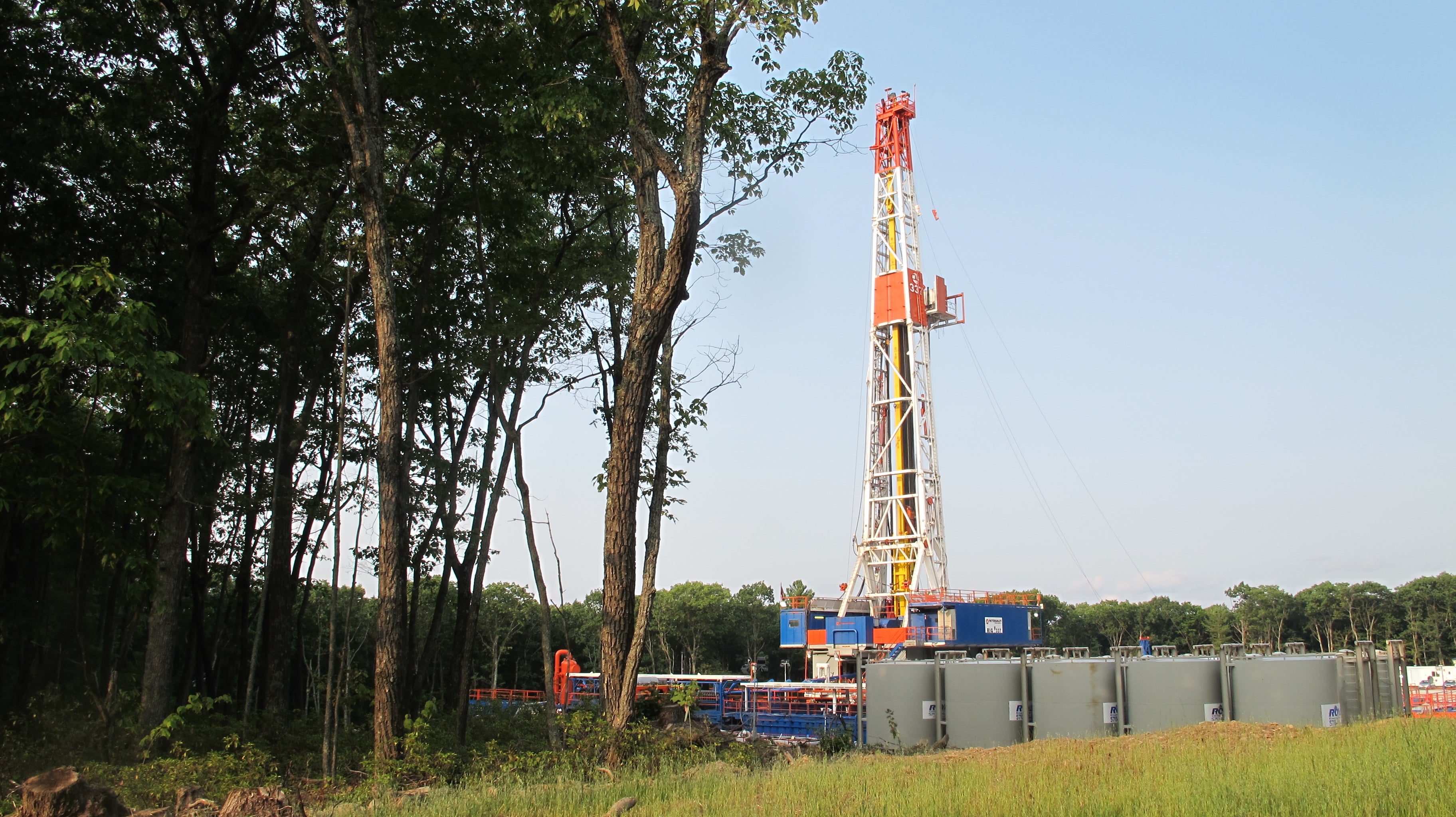Shale communities get funds to improve housing
Listen
Housing funds comes from fees assessed on each of the natural gas wells in the Marcellus Shale region. (Marie Cusick/StateImpact Pennsylvania)
Communities living in the footprint of the Marcellus Shale have faced housing challenges. PHARE funding is expected to help ease that burden.
The Marcellus Shale runs under 60 percent of Pennsylvania. But the areas where drilling takes place feel the economic effects more than most. On Thursday, those counties received $8.1 million in state funding to support 44 local projects that address housing availability, community development and rental assistance.
The sudden arrival of gas companies and employees has stressed the housing market in the Shale region. Out-of-state workers are looking for both temporary and permanent housing, often in rural counties. Gas workers tend to earn more than the median income in the areas where they work.
This led to a spike in the cost of rental housing, says Bryce Maretzki, of the Pennsylvania Housing Finance Agency. Landlords have evicted tenants, raised rents and terminated leases to open their doors to the higher paying gas workers.
“Some people just ended up homeless,” says Maretzki. “There were more people coming in to take jobs in the gas industry. There just wasn’t enough housing available, and it wasn’t affordable.”
The Pennsylvania Housing Affordability and Rehabilitation Enhancement (PHARE) fund takes fees from each of the gas wells in the Marcellus Shale region and allocates it to affordable housing in the most affected counties. Over the past four years, $35 million of PHARE funds have gone into 150 projects.
Some of the projects are straightforward. Indiana County has opened a homeless shelter for veterans. Blair County offers rental assistance to those who have seen their rents rise in recent years.
Others are more complex, multi-year projects that hope to have long-term effects after the gas boom. In Lycoming County, the funding has helped redevelop an old brownfield site in Williamsport.
“On the old industrial site, there is a 40-unit affordable housing complex that serves families and the elderly,” says Kim Wheeler, the deputy director of planning for Lycoming County. “And rather than plunking down a brand new apartment complex in a deteriorating neighborhood, we decided to reinvest. There’s $1,365,000 of PHARE funds now being utilized in that neighborhood for home upgrades.”
That successful investment has helped Lycoming County get federal money to clean up the streets, sidewalks and parks in the neighborhood as well.
For Liz Hersh, executive director of the Housing Alliance of Pennsylvania, the value of PHARE funding is in the diversity of these projects.
“It’s locally driven, so every community does something a little different,” says Hersh. “It allows them to respond to the unique local needs and priorities.”
Some communities are still dealing with the “boom” side of this equation — the arrival of workers. Others are seeing a dip in the gas economy, and are beginning to proactively prepare to avoid a bust.
And the time for that conversation is now. After three years of increasing PHARE funds available for allocation, 2015 saw a drop below 2013 levels. Wheeler says Lycoming County is starting to plan for beyond the gas industry.
“The gas industry didn’t create the housing issues that we have, but they exacerbated the situation that we’re seeing in a lot of cases,” says Wheeler. “They brought to light the issues that we had to deal with anyway.”
And provided a funding source to fix some of those issues. The project has been so successful that there is a bill in front of the state Senate to expand the PHARE fund beyond the Shale region, and beyond the Shale fee funding source. It passed the house unanimously in June.
See the full list of 2015 projects here.
WHYY is your source for fact-based, in-depth journalism and information. As a nonprofit organization, we rely on financial support from readers like you. Please give today.


